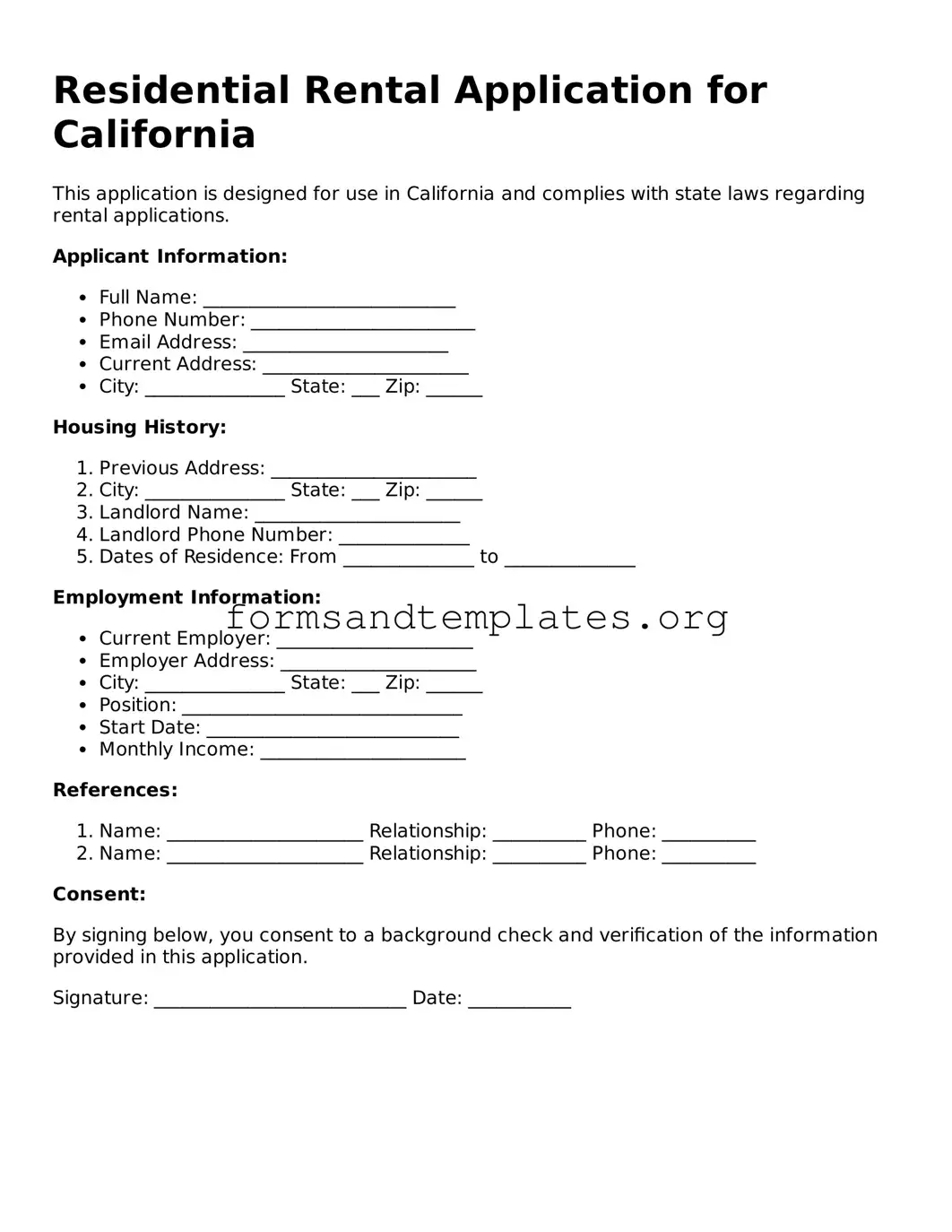A Rental Application form is a document that potential tenants fill out to provide landlords or property managers with information about themselves. This information helps landlords assess whether the applicant is a suitable candidate for renting their property. It typically includes personal details, rental history, employment information, and references.
Why do I need to fill out a Rental Application?
Filling out a Rental Application is essential for several reasons:
-
It allows landlords to evaluate your suitability as a tenant.
-
It helps establish a formal record of your rental history.
-
It provides landlords with necessary information to conduct background checks.
Typically, you will need to provide the following information:
-
Your full name and contact information.
-
Social Security number or other identification details.
-
Employment history, including current employer and income.
-
Rental history, including previous addresses and landlord contacts.
-
References, which may include personal and professional contacts.
How does the landlord use my Rental Application?
Landlords use the Rental Application to assess your qualifications as a tenant. They may verify your employment, check your credit history, and contact previous landlords to gather information about your rental behavior. This helps them make informed decisions about who to rent to.
Is there a fee to submit a Rental Application?
Many landlords charge a non-refundable application fee to cover the costs of processing your application, including background and credit checks. The amount can vary widely, so it's important to ask about any fees before submitting your application.
What happens after I submit my Rental Application?
After submission, the landlord will review your application. They may contact you for additional information or clarification. Depending on their process, you could receive a response within a few days to a week. If approved, you will typically be invited to sign a lease agreement.
Can I be denied a rental application?
Yes, a landlord can deny your application based on various factors, including poor credit history, insufficient income, or negative rental history. If you are denied, the landlord is usually required to inform you of the reasons for the denial.
What should I do if my Rental Application is denied?
If your application is denied, you can take several steps:
-
Request a written explanation from the landlord.
-
Review your credit report for inaccuracies.
-
Consider providing additional documentation or references to support a new application.
Can I appeal a Rental Application denial?
While there is no formal process for appealing a denial, you can reach out to the landlord to discuss your situation. Providing new information or clarifying any misunderstandings may improve your chances of being reconsidered.
